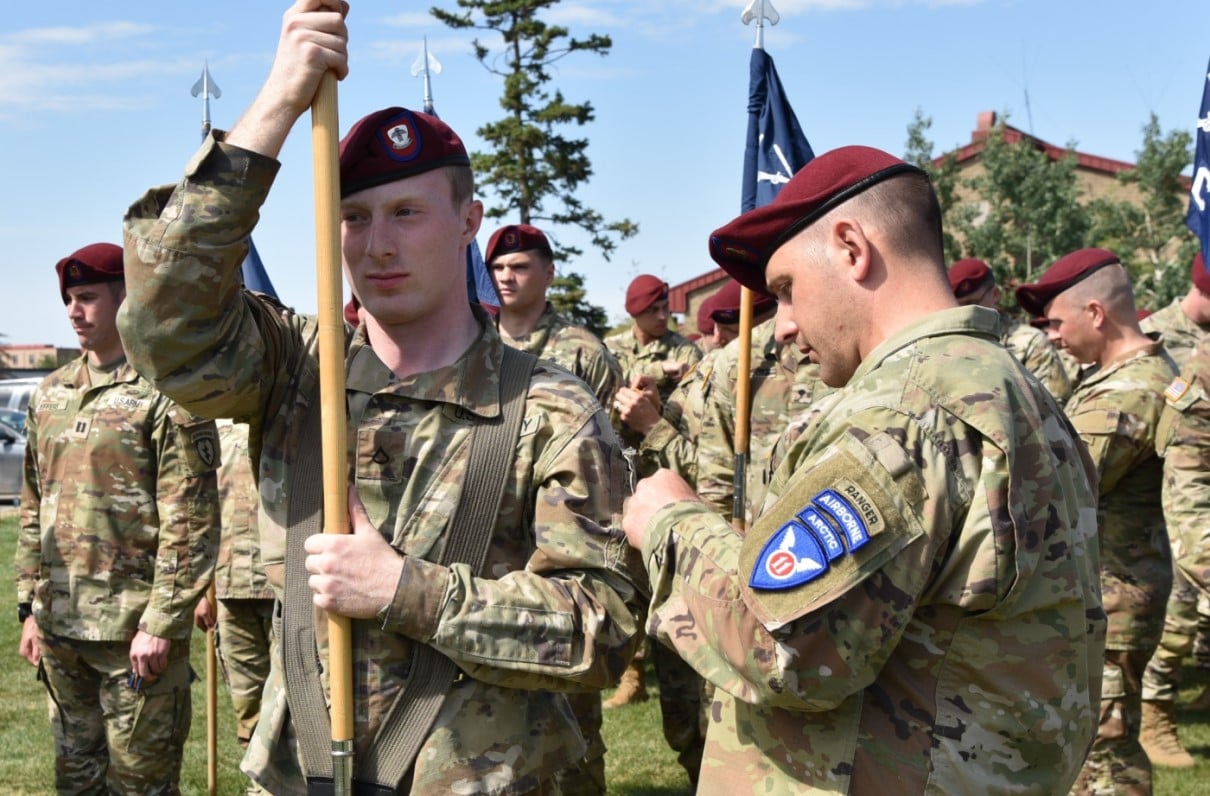Editor’s note: This article by Steve Beynon originally appeared on Military.com, a leading source of news for the military and veteran community.
The Army on Monday activated the new 11th Airborne Division in Alaska, a historic move that brings the service's 12,000 soldiers in the state under a single banner.
The change will bring the service closer to its mission in Alaska of mastering the frigid, inhospitable Arctic terrain. Previously, two of its brigades were loosely associated with the 25th Infantry Division, an element known for its specialty in jungle warfare. The new division has also folded in U.S. Army Alaska, which mostly served a headquarters role in the region.
As the Army reorients after decades of counterterrorism operations back to conventional warfare, it is anticipating that frigid environments will play a huge role in modern conflicts. Adversaries Russia and China have already laid claims to the Arctic Circle, where melting ice is freeing up territory, natural resources and new sea routes.
"They will be the experts for our Army, and we like to see the best in the world operating in this environment," Gen. James McConville, the Army's chief of staff, told reporters at a press conference Monday.
[RELATED: Check Out the Unit Patch for the Army’s Newest Airborne Division]
The 11th Airborne will take center stage in that strategy, as commanders in the region refine doctrine and fit their troops with the gear they need to survive in extreme temperatures. Unlike other environments in which soldiers train, the environment itself is deadly -- sometimes dipping to minus-65 degrees Fahrenheit.
It isn't Alaska itself the Army is planning to defend. Any invading forces there would have to cross hundreds of miles of frozen terrain, a virtually impossible task for vehicles and a challenge for the sustainment of troops, including feeding them.
Commanders in the region have pointed to past conflicts as examples of why the Army needs a unit dedicated to fighting in the extreme cold, such as the Battle of the Bulge and the campaign in Italy during World War II, and much of the Korean War, where freezing temperatures were often as deadly as the enemy.
Commanders have told Military.com they aim for units there to be a prestigious force, having to carry more gear and thrive in more difficult conditions than other conventional units in the Army. Given the frigid climate, service planners have acknowledged Alaska isn't for everyone and have made moves to slowly make it more of a volunteer force, including allowing new recruits to pick Alaska as their duty station when they enlist.
Most significantly, the new formation eliminates a brigade of Strykers for the Army, redesignating the 1st Stryker Brigade Combat Team, 25th Infantry Division, to the 1st Infantry Brigade Combat Team, 11th Airborne Division. The service will take Alaska's aging fleet of 320 Strykers and scrap some vehicles for parts, and update others to send to other units.
[FROM MILITARY OFFICER MAGAZINE: What Does a Warming Arctic Region Mean for the Military?]
The new formation will not add any more airborne capabilities to the Army's bottom line with the former Stryker brigade redesignated as a light infantry brigade. McConville said those troops will instead focus on air assault operations.
The division reintroduced the patch used decades ago by the 11th Airborne Division, but with an Arctic twist. The original unit fought in the Pacific Theater in World War II and later tested out air assault tactics before it was deactivated in 1965.
That new patch will add an "Arctic" tab above the classic "airborne" tab seen with other units such as the 82nd Airborne Division. Previously, the Arctic tab was an award for completing an 11-day Arctic survival course in Alaska.
PREMIUM Membership Comes With So Many Benefits. Are You Taking Full Advantage?
Find out just how many benefits are waiting for you, and start using them TODAY.
